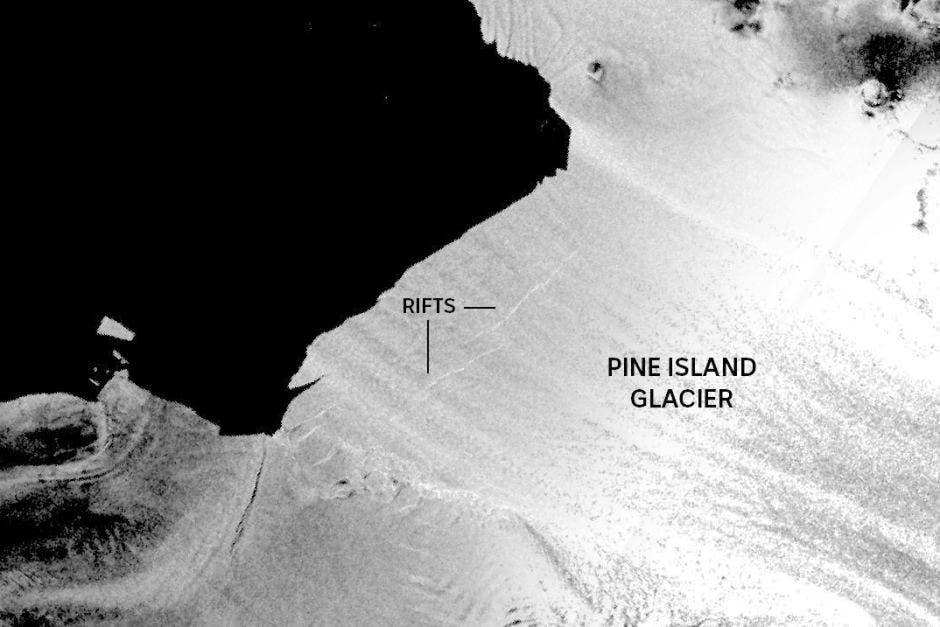Scientists had been waiting and watching it for months and it finally happened. A 300 square kilometers (116 square miles) iceberg broke off Pine Island Glacier (PIG), Antarctica’s biggest glacier and also the fastest melting one of the continent.

Thanks to the images of the European Space Agency’s (ESA) Sentinel satellites, last year two large cracks were detected in the glacier in 2019 and scientists have been closely monitoring the speed with which these cracks grow.
The cracks in the glacier expanded fast and eventually led to the splitting of the iceberg on February 9. It took just a day for the iceberg to divide into smaller pieces and one of them was large enough to be named, B-49, and tracked by the United States National Ice Centre.
An animation published by ESA used 57 radar images captured between February 2019 and February 2020 (the last one on February 10) and shows how fast the emerging cracks grew and led to this event.
“What is unsettling is that the daily data stream [from satellites] reveals the dramatic pace at which climate is redefining the face of Antarctica,” said Mark Drinkwater, senior scientist and cryosphere specialist at the European Space Agency, in a press release.
The Pine Island Glacier, together with its neighboring Thwaites Glacier, connects the center of the western Antarctic ice sheet with the ocean, discharging significant amounts of ice to the sea. These two glaciers have been losing ice for the past 25 years.
Due to its extremely remote location, satellites play a fundamental role in the measurement and monitoring of Antarctic glaciology, revealing the timing and pace of the withdrawal of glaciers in Antarctica. Since the early 1990s, the ice speed of the Pine Island glacier has increased dramatically to values exceeding 10 meters per day.
The floating ice front of Pine Island Glacier, which has an average thickness of approximately 500 meters, has undergone a series of detachment events in the past 30 years, some of which have abruptly changed the shape and position of the ice front.
“This indicates that Pine Island ice shelf is weakening as a result of warm ocean water and this is important as the ice in the Amundsen Sea Embayment, where PIG is located, is the area where we scientists are most worried about contributions to sea-level rise,” Stef Lhermitte, a remote sensing scientist from the Delft University of Technology in the Netherlands, said to ABC.
Western Antarctica is one of the regions of the world most affected by climate change and its collapse would mean a significant sea-level rise. A recent study showed that global warming changed the character of the winds that blow over the ocean near some of the glaciers, affecting them in severe ways.
The new development on the Pine Island Glacier happened just a week after a temperature record of 18.3ºC was registered in Antarctica, exceeding the previous record of 17.5ºC. Temperatures in the white continent have been measured since 1961, with the historical minimum set at -89.2ºC in 1983.






